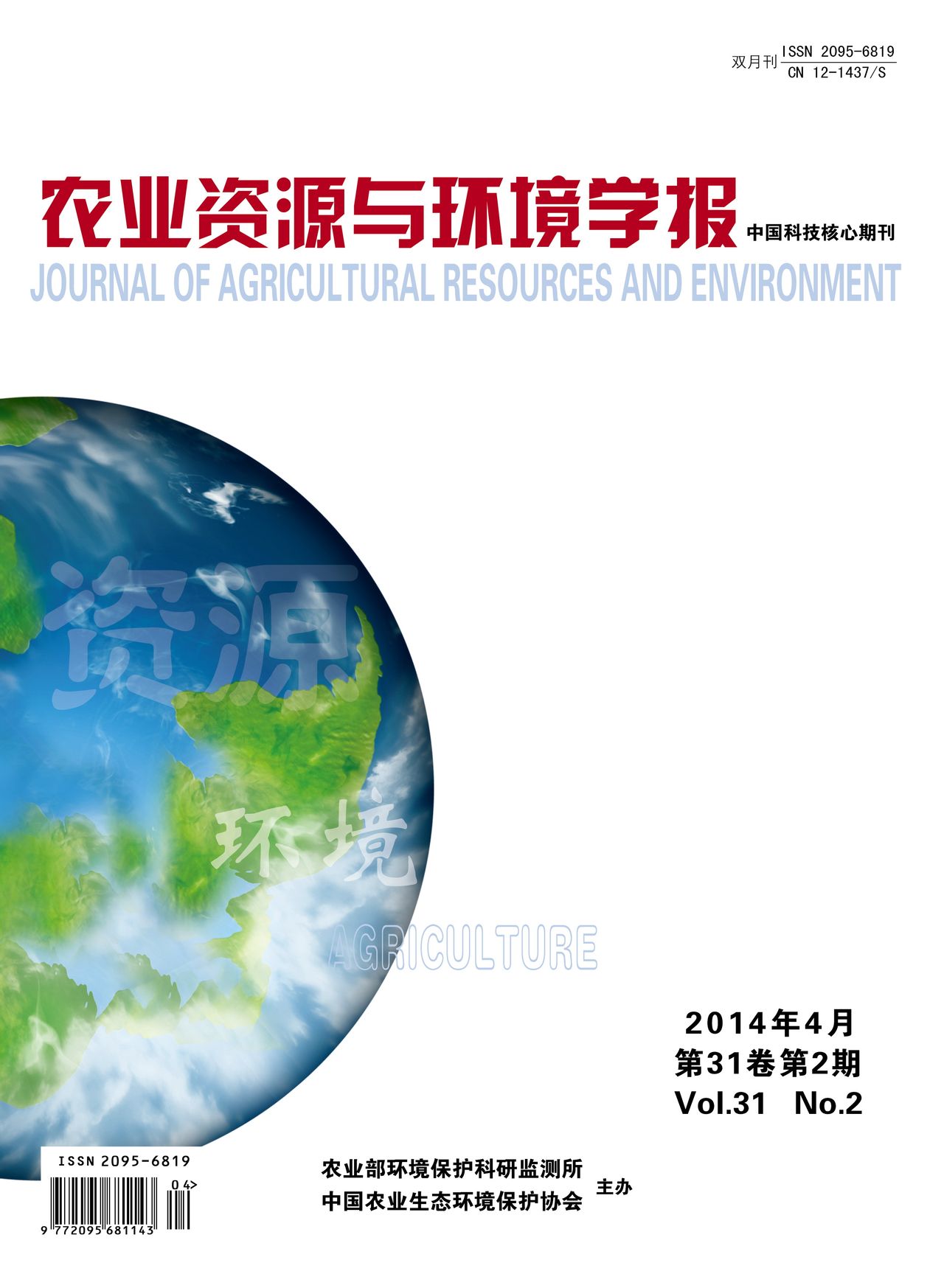不同控制措施对温室栽培黄瓜产量、品质及土壤微生物多样性的影响
Q3 Agricultural and Biological Sciences
引用次数: 0
摘要
为研究不同防治措施对土壤微生物多样性的影响,采用生物学方法对山东省寿光市黄瓜大棚土壤进行了采集,研究了土壤与黄瓜产量和品质的关系。结果表明:秸秆还田(RS)的平均井色发育(AWCD)最高,不施肥(CK)最低;培养72 h时微生物活性旺盛,AWCD值为0.494 ~ 0.881。RS处理的AWCD是常规施肥(CF)的1.3倍,目前差异达到显著水平。滴灌(DI)处理的AWCD略低于CF处理。不同处理的土壤微生物多样性发生了变化。CF的香农指数(H)和底物均匀度(E)最低,但施RS和DI显著提高了这两个指数。主成分分析表明,不同处理下土壤微生物群落的碳利用也发生了变化。RS集中于第一主成分的正方向,评分系数在4.91 ~ 5.50之间。相反,其他人则集中在负方向,得分系数在-3.26 -0.18之间。与CF相比,RS和DI处理黄瓜产量和品质无显著变化。Simpson优势度(Ds)和底物丰富度(S)与黄瓜产量、Vc和可溶性糖含量呈正相关。综合考虑,RS比DI更有利于土壤微生态环境的改善。因此,对农业可持续发展进行RS研究是十分必要的。本文章由计算机程序翻译,如有差异,请以英文原文为准。
Effects of Different Control Measures on Cucumber Yield,Quality and Soil Microbial Diversity Under Greenhouse Cultivation
In order to research the effects of different control measures on soil microbial diversity by Biolog, the greenhouse soils of cucumber cultivated in Shouguang City, Shandong Prorince were collected and the relationship between the soils and yield and quality of cucumber was investigated. The results showed that, the average well color development (AWCD) of returning straw to field (RS) was the highest and that of no fertilizer (CK) was the lowest. The activity of microbe was vigorous at the time of cultivation of 72 h and AWCD of treatments ranged from 0.494 to 0.881. AWCD of RS was 1.3 times than that of conventional fertilization (CF) and the difference reached significant level at the moment. However, AWCD of drip irrigation (DI) was lower slightly than that of CF. Soil microbial diversity changed in different treatments.CF had the lowest Shannon index(H)and Substrate evenness(E), but these two indices increased significantly through the application of RS and DI. Principal component analysis showed that carbon utilization by soil microbial communities also changed in different treatments. RS concentrated in the positive direction of the first principal component and the score coefficients ranged from 4.91 to 5.50. Conversely, others concentrated in the negative direction and the score coefficients ranged from-3.26 to-0.18. Compared with CF, cucumber yield and quality of RS and DI treatments had no significant changes. Simpson′s dominance (Ds) and Substrate richness(S)were positively correlated with cucumber yield, Vc and soluble sugar content. Comprehensive consideration, RS was more helpful to improve the soil micro-ecological envrion-ment than DI. Therefore, future research of RS is necessary for sustainable development of installation agriculture.
求助全文
通过发布文献求助,成功后即可免费获取论文全文。
去求助
来源期刊

农业资源与环境学报
Agricultural and Biological Sciences-Agricultural and Biological Sciences (all)
CiteScore
1.90
自引率
0.00%
发文量
4438
审稿时长
24 weeks
期刊介绍:
Journal of Agricultural Resources and Environment (CN 12-1437/S, ISSN 2095-6819) is a national academic scientific and technical journal. It was founded in 1984, and used to be called Foreign Agricultural Environmental Protection and Agricultural Environment and Development. It is supervised by the Ministry of Agriculture and Rural Affairs, and co-sponsored by the Scientific Research and Monitoring Institute of Environmental Protection of the Ministry of Agriculture and Rural Affairs, and the China Association of Agricultural Ecological Environmental Protection. The journal is one of China's high-quality science and technology journals, China Science Citation Database (CSCD) core journals, Peking University Chinese core journals, China Science and Technology core journals, China Agricultural and Forestry core journals, and Tianjin Outstanding Journals. It is included in the international authoritative databases, such as Scopus database of the Netherlands, the database of the Center for International Agricultural and Biological Sciences Research (CABI) of the United Kingdom, the Stephens Database (EBSCOhost) of the United States, the Ulrichsweb (Ulrich's Guide to Journals) of the United States, EuroPub of the United Kingdom, the Abstracts Journal (AJ) of the Russian Federation, and the Copernicus Index (IC) of the Poland, and so on.
 求助内容:
求助内容: 应助结果提醒方式:
应助结果提醒方式:


